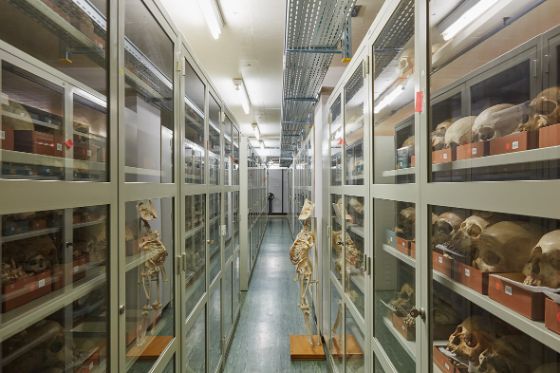
Life sciences
collections
The biological collections of the Natural History Museum Basel were established over the course of the last few centuries in order to learn about, document and preserve for the future the diversity of life. Museum-funded expeditions and exchanges with other museums have yielded the extensive array of objects spanning every kind of animal that can be found in our extensive collections.
We keep these biological objects in different forms, depending on the group: birds, mammals, and insects are generally kept as dry preparations, while fish, amphibians, reptiles, and invertebrates are kept in seventy per cent alcohol in order to keep them in good condition for many years. Very small animals, such as mites, are kept as embedded preparations on microscope slides.
Unlike the objects in the exhibitions, which are mounted in lifelike poses, the objects of the scientific collections are usually stored in a space saving way. We keep birds, for example, as flat specimens with closed wings. We archive multiple specimens of spider together in a single storage jar.
The collections are designed to last for a long time, i.e. for centuries. So correct storage under climate-controlled conditions and completely sealed glass jars containing alcohol preparations are essential.
